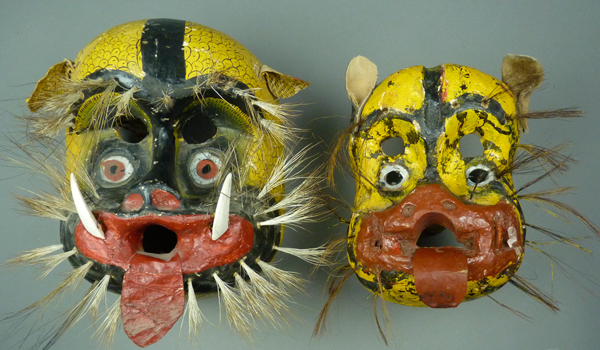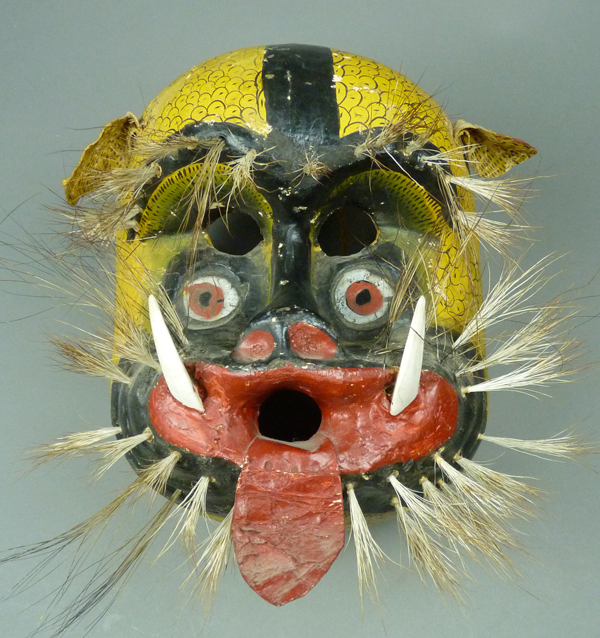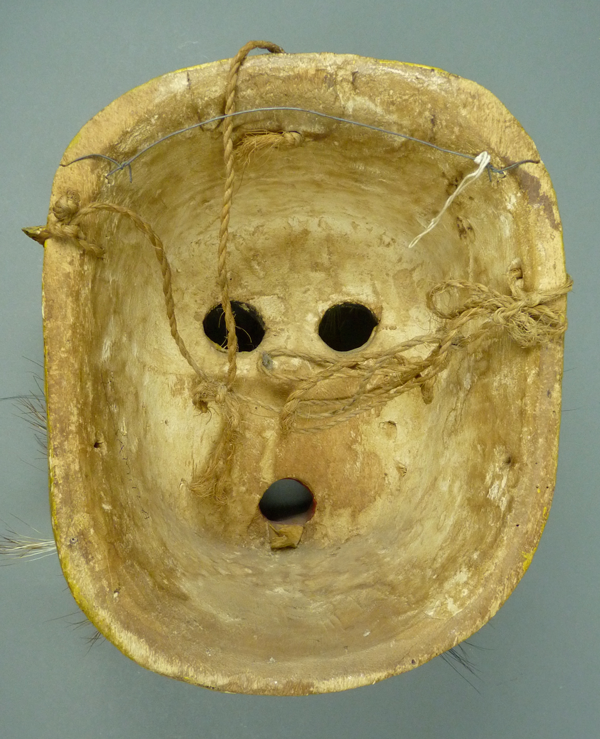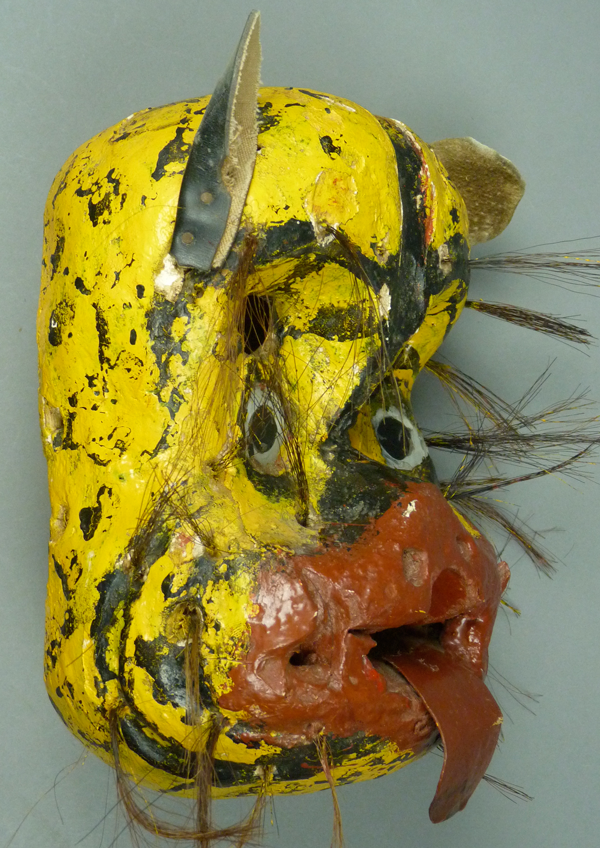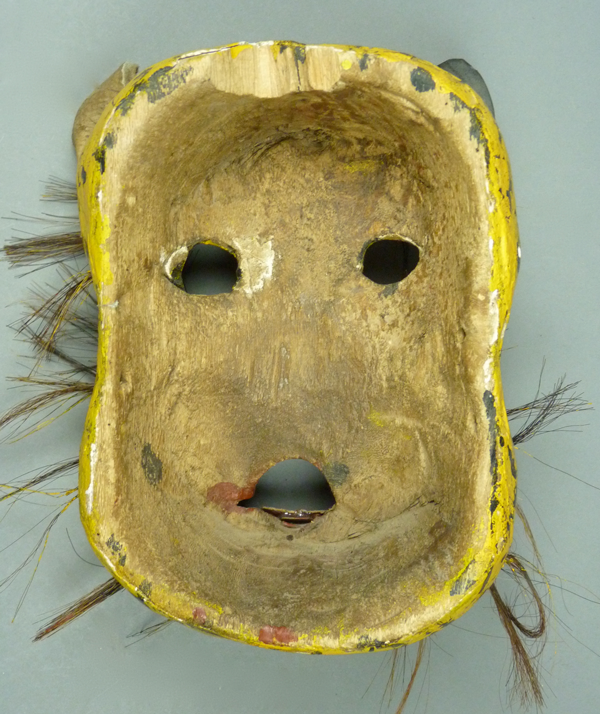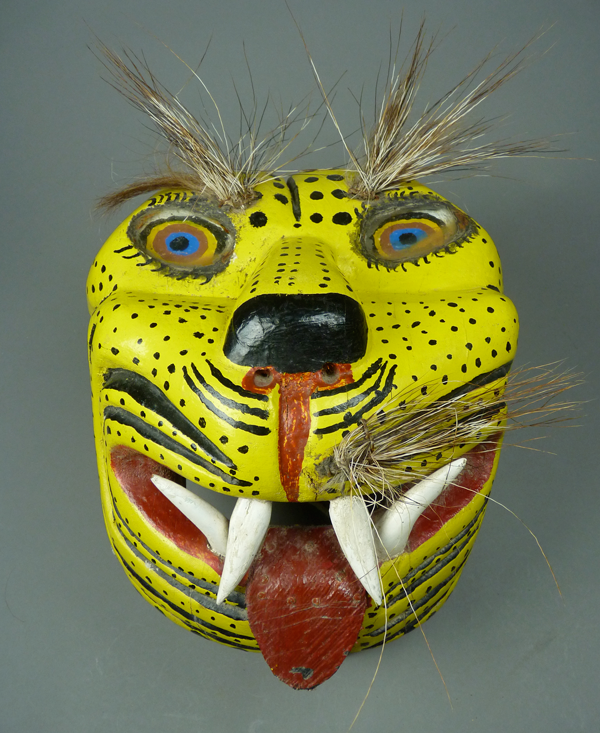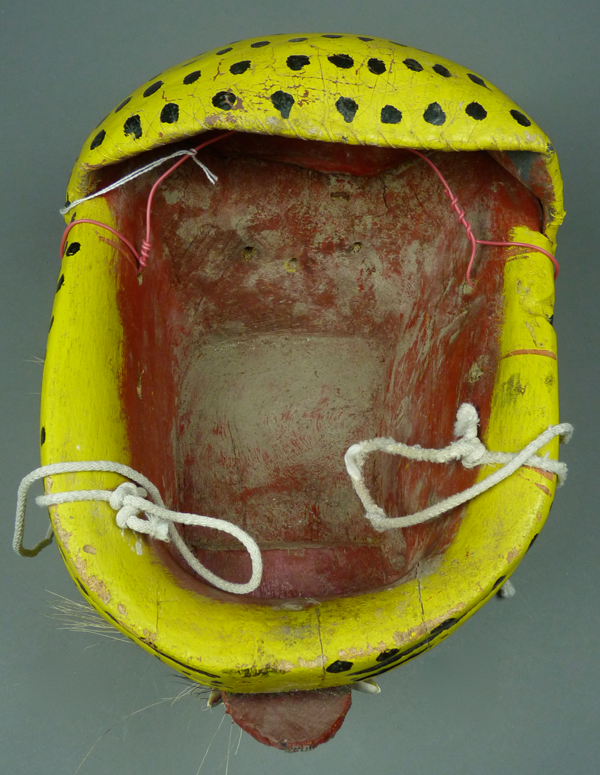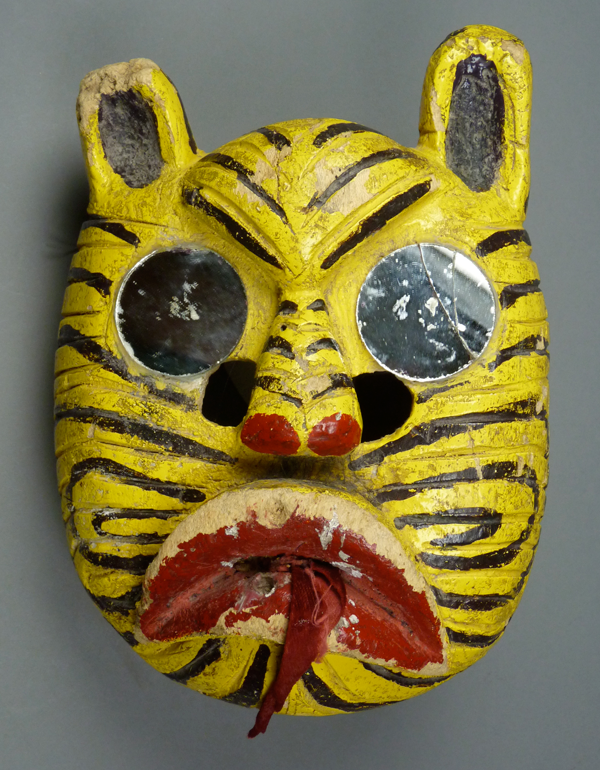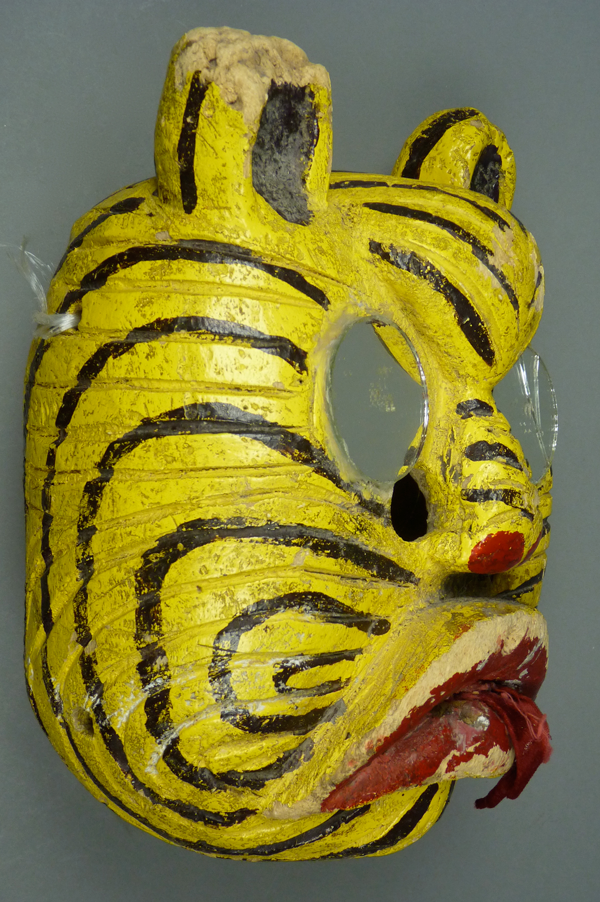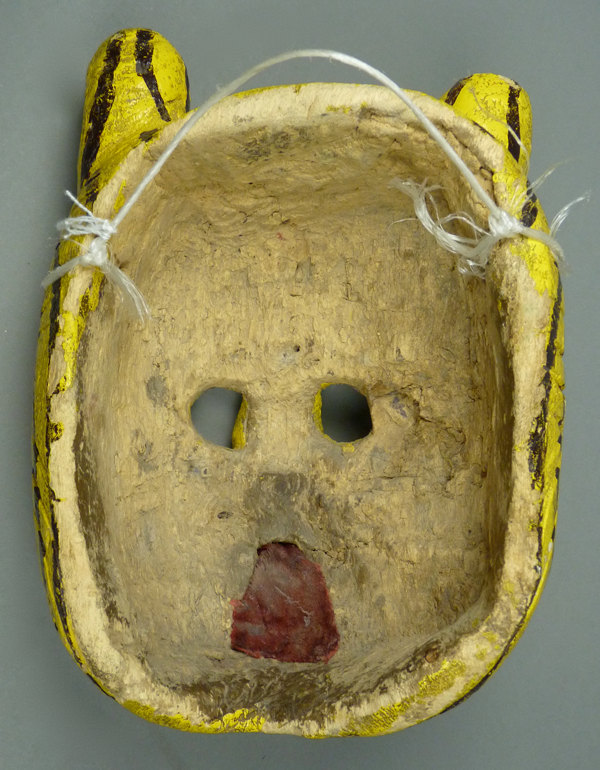This week I will continue my discussion of Tigre masks from Guerrero. The first two masks are examples of the famous Olinalá Tigres, the highly distinctive jaguar masks from Olinalá, Guerrero. The first is adult-sized and the second was worn by a child. To introduce these masks, here is a YouTube™ video from Olinalá.
https://www.youtube.com/watch?v=9cwEk-rArN4
Here are the two masks together.
This is the adult mask. I bought it from Jaled Muyaes and Estela Ogazon in 2001. It was found in Olinalá, Guerrero, from a man there who had rented it out over a period of 20 years. Written inside the mask is the name of a place on the Pacific coast of Guerrero—Isla Mitla. There does not seem to be a dance tradition there.
The height of this mask is 10½ inches, the width is 8½ inches, and the depth is 7 inches.
As is commonly the case, this mask is decorated with hog bristles and tusks.
The back of this mask has apparently been scrubbed in the course of its repeated rentals.
This is the mask that was worn by a child. I purchased it from the Primitive Arts Gallery in Tucson, Arizona, in 1998, without provenance. It has lost its tusks.
The height of this mask is 8inches, the width is 6 inches, and the depth is 3½ inches.
The child’s Olinalá style Tigre has good patina.
The next Tigre mask was collected in Tixtla, Guerrero, by Jaled Muyaes and Estela Ogazon, and might have been danced in the Danza de los Tlacololeros. It was accompanied by the dancer’s brown corduroy coveralls, his dance costume. Here is a YouTube video of the Tlacololeros. Unfortunately the video does not reveal the name of the village, but I feel certain that the dances are representative of those from Tixtla. This is one of the best dance videos from Mexico that I have ever seen; do not miss it! The occasion is a fiesta dedicated to Señor Santiago (Saint James the apostle/ Santiago Caballero), so the parade begins with dozens of children portrayed as Saint James, usually accompanied by a living or a toy horse. Then a series of dance troupes will appear, first Tlacololeros, followed by Moors, then some very young Tlacololeros, and then a second Tlacololero troup. Watch how they dance. We can look at masks, but look what happens in this video when masks are combined with costumes, dance steps, and live music. After the third Tlacololero group you will see Diables and Diablas, accompanied by the figure of death, wearing a skull mask. The Manueles follow, with their twisted canes, the “old woman” is a sight to behold as she offers “her” rump to onlookers as if inviting intercourse. Another group of Manueles follow,consisting mainly of Viejas (old women) of all sizes and ages. These old lady figures are grotesque caricatures of normal women. The Tlacololeros are the ones who are cracking their bullwhips, they wear burlap capes, and they are usually preceded by a Tigre dancer. There are so many groups doing the same dances because they come from different neighborhoods or “barrios.”
https://www.youtube.com/watch?v=kcfeVsNiv8U
The height of this mask is 13 inches, the width is 10 inches, and the depth is 9 inches.
The lip around the back of the upper rim is constructed from a rubber ball, perhaps a soccer ball.
The fourth mask came to me from EBay™ without provenance, but it is obviously in the style of Guerrero. There are vision openings that are about halfway between the top of the mask and the chin, as one finds on the Tlacololero masks from Tixtla, so it is possibly also from that area and tradition. I found a dance photo of two dancers with similar masks and striped suits, taken by Patricio Robles Gil, but there is no mention of the town in México where they were dancing. The book is Mexico: Diversidad de Culturas (1995, page 48).
The height of this mask is 10 inches, the width is 8 inches, and the depth is 5 inches.
In next week”s post I will discuss the Tecuanes dance from a remote area of Guerrero that is called the Tlapaneca, the traditional home of the Tlapaneco Indians.

